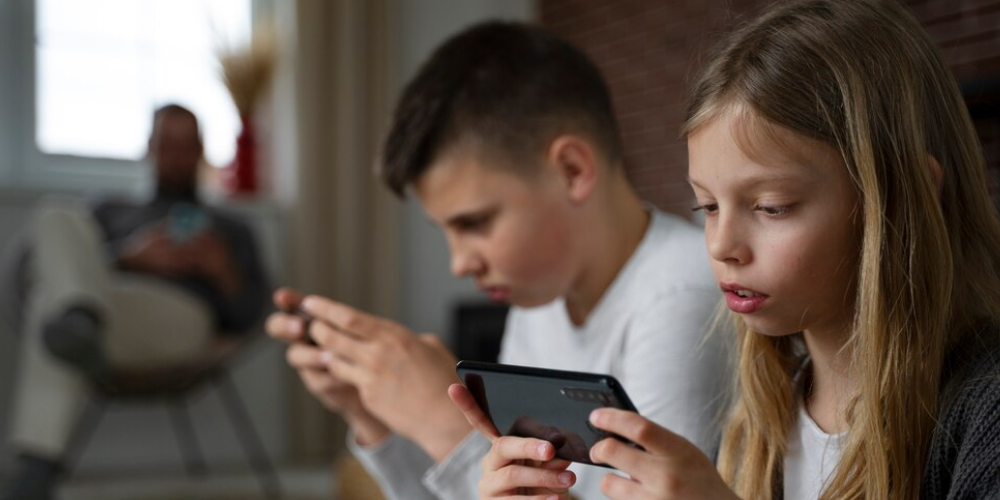The ubiquitous presence of smartphones in our pockets and purses has undeniably reshaped the way we live, work, and connect. But with this constant connectivity comes a growing concern - have smartphones destroyed a generation? This question isn't just a dramatic headline. Studies suggest a potential link between excessive smartphone use and a decline in mental well-being, particularly among teenagers.
Let's delve deeper into this complex issue and explore the potential consequences of our smartphone habits.
The Rise of iGen and the Digital Shift

Freepik | peoplecreations | Between 1995 and 2012, rapid smartphone adoption transformed the social landscape for this age group.
The introduction of smartphones coincided with the emergence of iGen, a generation born between 1995 and 2012. This age group witnessed a rapid rise in smartphone ownership, fundamentally altering their social landscape. Imagine a world where texting replaces face-to-face interactions, and social media platforms become the primary avenues for connection. This is the reality for many iGen individuals.
A Widespread Phenomenon
It's important to recognize that the impact of smartphones transcends generational boundaries. While the effects might be more pronounced among iGen, the truth is, we're all susceptible to the allure of our devices. How often do we find ourselves mindlessly scrolling through social media feeds, neglecting real-life interactions? How often does the blue glow of a smartphone screen disrupt our sleep patterns? These experiences are not unique to teenagers; they're a reflection of our collective struggle with maintaining a healthy relationship with technology.
Have Smartphones Destroyed a Generation? Potential Downsides
Research suggests a correlation between excessive smartphone use and several potential downsides:
1. Mental Health Concerns

Freepik | Studies link increased smartphone use to depression, anxiety, and loneliness.
Studies have linked increased smartphone use with symptoms of depression, anxiety, and loneliness. The constant barrage of curated online lives can negatively impact self-esteem and foster feelings of inadequacy.
2. Sleep Issues
The blue light emitted by smartphones disrupts the production of melatonin, a hormone essential for regulating sleep cycles. This can lead to difficulty falling asleep and staying asleep, further impacting overall well-being.
3. Social Interaction
Smartphones can act as a barrier to genuine social interaction. Face-to-face communication allows for nuanced understanding through body language and tone of voice, elements often missing in digital interactions. The constant presence of smartphones can also lead to feelings of isolation, even in social settings.
A More Balanced Relationship with Technology
While acknowledging the potential drawbacks is crucial, it's important to remember that smartphones are powerful tools. They offer access to information, communication channels, and endless entertainment possibilities. The key lies in cultivating a balanced relationship with these devices.

Freepik | Schedule face-to-face interactions with friends and family and put your phone away to be fully present.
Here are some tips to promote healthy smartphone habits:
- Mindful Usage - Be conscious of how much time you spend on your smartphone. Set boundaries and establish device-free zones, like bedrooms and mealtimes.
- Prioritize Real-Life Connections - Make a conscious effort to schedule face-to-face interactions with friends and family. Put your phone away during these times to be fully present.
- Embrace Tech-Free Activities - Explore hobbies and activities that don't involve a screen. Take a walk in nature, read a book, or engage in a creative pursuit.
- Curate Your Feed - Social media can be a double-edged sword. Unfollow accounts that make you feel inadequate or anxious, and curate your feed to include positive and inspiring content.
- Seek Support - If you feel overwhelmed by your smartphone use, don't hesitate to seek help. Talk to a therapist or counselor who can guide you towards establishing healthy digital boundaries.
So, have smartphones destroyed a generation? The answer is likely more nuanced. While there are undeniable concerns, smartphones also offer countless benefits. By fostering a more conscious and responsible approach to using these devices, we can harness their power for good and minimize their potential downsides.

